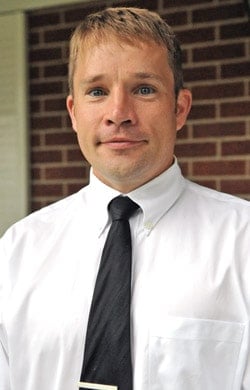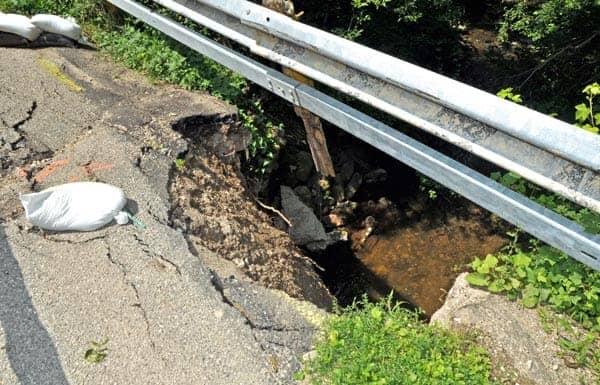As the vice-president of Efficiency Engineering, Andrew Epp manages infrastructure projects ranging from the skating rink at Nathan Phillips Square in Toronto, to the international field hospital in Khandhar, Afghanistan.

Now, Epp is looking to apply his technical expertise as the councillor for Wellesley’s Ward 4.
“Our firm does energy retrofits,” Epp said at his home in St. Clements. “We look at existing buildings and make them more energy efficient. Most of the buildings we have were built in the ’70s. All the problems we deal with and I deal with on a daily basis are here in Wellesley, in aging infrastructure; it needs to be replaced on a plan.”
Epp joins Carl Smit, Brian Cunningham and Gord Doehn in the race for Ward 4. The four-way competition is a stark contrast to the 2010 election, when incumbent Paul Hergott ran unopposed. Hergott is now running for mayor.
“Like a lot of people (my wife and I) came here because this is probably the best place in the region to raise kids,” Epp, the father of boys Grayson, 3, and Quentin, 6, said. “We’ve been here for two years and we absolutely love it. We’re going to raise our family here and that’s one of the reasons that I’m drawn to run for council.”
On council, Epp would keep taxes low while maintaining service levels. He also stressed the importance of a measured growth strategy that balances the needs of the business community with the small-town atmosphere residents cherish.
“A real important thing here in Wellesley is our heritage landscape,” he said. “People come here for a reason. One of my priorities is to maintain that heritage landscape. My family is here for a reason and my neighbours are here for a reason. So I want to keep that and be a guardian of that. But there is a lot of work to do that; we can’t just sit back.”
But his biggest strength is problem solving, as demonstrated while working on the rink at Nathan Phillips Square, he said.
“That was an energy conservation (project). It was old, from ’64, and concrete is not forever. So it needed to be replaced, and the engine room is very, very old. It runs great, and the refrigeration technicians who take care of those are very skilled and knowledgeable, so they keep it running. So (it was) running, albeit, inefficiently.”
Unfortunately, plans to upgrade the engine room had to be postponed after a number of unforeseen issues arose.
“That happens in retrofits,” he said. “You can count on it, the unforeseen stuff. So we had to get creative.”
After excavating down below the ice surface’s concrete pad, Epp discovered that the piping system was badly damaged.
“The project itself was pulling out the concrete and digging right down to the top of the parking garage, and rebuilding it so it’s brand new,” he said. “When you make ice, you have pipes running back and forth and they were full of holes. So it runs brine, calcium chloride, salt water through it and that’s how we pull the temperature of the concrete down. Making ice is kind of a misnomer. We freeze concrete and the byproduct is (when) you pour water on it and it freezes. We use that brine as the heat transfer, and it was leaking, so we had less and less of it, and so the plant has to run more and more and more.”
Instead of simply patching the leaks, which is costly and ineffective, Epps recommended replacing the pipes.
“You can patch it as much as you want, but up to a point it just stops working,” he explained. “So case and point, when we drained it, it held 60 gallons of brine and the new rink holds 220. So it was like a quarter full. A hockey rink is just a giant refrigerator anyway, so imagine you have these holes in behind your fridge – it’s like flicking the switch and just paying out money.”
Planning is key, Epps says, since waiting for equipment or facilities to break down is almost always more expensive than acting early.
“We can’t leave jobs ’til the end. We never advise our clients to leave (for example), a heating boiler, and let it run out and die, because you’ll pay three times the price. You have to try to plan these things. As my father says, ‘when you plan your work you work your plan.’”









